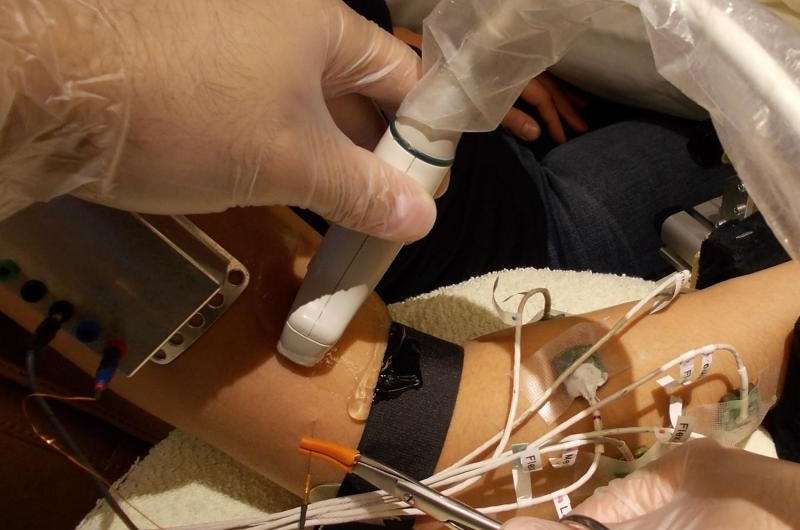Motor learning tied to intelligent control of sensory neurons in muscles

Sensory neurons in human muscles provide important information used for the perception and control of movement. Learning to move in a novel context also relies on the brain's independent control of these sensors, not just of muscles, according to a new study published in the journal Current Biology.
Each muscle can have tens or hundreds of encapsulated sensory receptors, and these "sensors" are called muscle spindles. Spindles differ from other sensory receptors as they also receive nerve fibers from the central nervous system itself, which acts to control spindle output.
There are more nerve fibers travelling to and from spindles than to the actual muscle tissues generating force and powering movement. Despite more than a hundred years of research on this class of sensory receptors, however, it has been unclear how, why and when the nervous system chooses to independently control spindles.
"The findings strongly point to independent control of these sensors during motor learning," says Dr. Michael Dimitriou, who conducted the study and is a researcher at the Department of Integrative Medical Biology at Umeå University in Sweden.
In this study, Dr. Dimitriou monitored spindle signals in humans while they learned to control the position of a visual cursor by moving their hand (much like using a computer mouse). Depending on what stage in the learning process, the spindles sent very different signals in response to virtually identical movements.
The research shows that the sensory capability of spindle neurons was adjusted according to the ongoing requirements of the task being learned. In other words, muscle spindle signal patterns were changed during the learning process to become selectively informative about different aspects of movement.
"It is well-known that effective extraction of information is a major component in good learning performance, and this is true in motor adaptation as well. Richer and more relevant sensory information from spindles allows for efficient update of the computational circuits in our brain that guide movement. Differing levels of skill in controlling muscle sensors is probably a factor defining individual differences in motor learning performance," says Dr. Dimitriou.
Beyond increased understanding of how human motor learning works, the current findings may also have more practical implications, such as in prosthetic limb and robotics control, argues Michael Dimitriou:
"To use a common example, computer algorithms can easily defeat a human in a game of chess. However, even the most sophisticated robot cannot match the skill and dexterity of a child in moving pieces on the chessboard. Better understanding of human sensory control is a way forward."
More information: Current Biology, dx.doi.org/10.1016/j.cub.2016.02.030
















